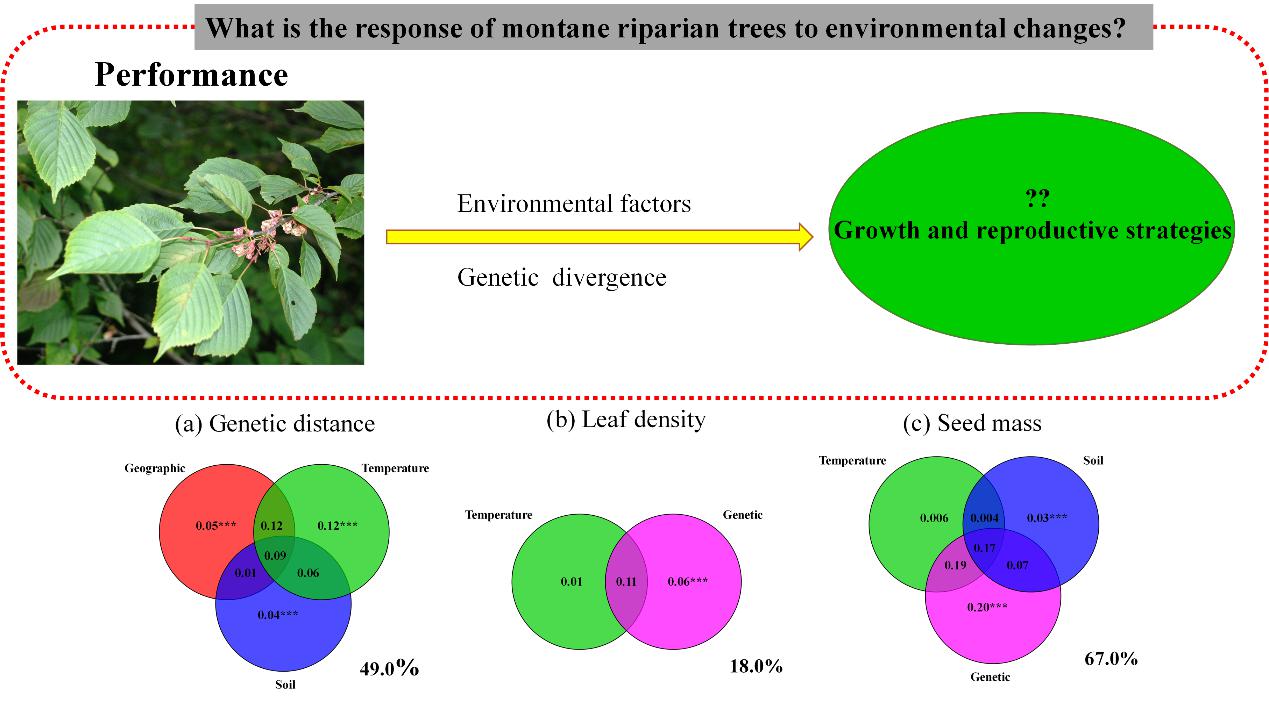Name:Mingxi Jiang
Tell:
Email:mxjiang@wbgcas.cn
Organization:Wuhan Botanical Garden
Smart Montane Trees Adopt Trait-specific Strategies to Environmental Changes
2020-11-11
Subtropical mountain region is a biodiversity hotspot and a “museum” for woody genera with high conservation priority. High montane habitats are sensitive to climate change. However, knowledge of adaptive strategies and the underlying mechanisms is lacking for the majority of taxa, such as montane riparian trees.
To investigate the underlying processes of adaption strategies in montane riparian forests, the Vegetation Ecology Group from Wuhan Botanical Garden, examined leaf, seed, and sprouting traits, and genetic divergence of Euptelea pleiospermum Hook. f. & Thoms. (Eupteleaceae) populations across its Chinese distribution.
Result showed that E. pleiospermum populations adopted a resource-conservative strategy with low growth rates and higher sprouting under flooding disturbance, with larger seeds for improved seedling recruitment at lower latitudes; high growth rate and sexual reproduction with small seeds were strategies adopted by populations at higher latitudes; both isolation by distance and isolation by environment effects resulted in spatial pattern of genetic divergence; isolation by environment effect resulted in the divergence of growth and reproductive traits.
Sprouting was only significantly related to precipitation, which might be a plastic response (short-term process) to seasonal flooding disturbance. In contrast, the divergence of seed mass and leaf density was highly related to genetic divergence, which might be evidence of local adaption (long-term process) to temperature and soil nutrients. Temperature and soil conditions were likely the main ecological factors shaping plant divergence in montane riparian regions.
Plants might be smarter than we known. And this study evidences that plant's response to its environment is trait-specific, whereas growth and reproduction strategies are habitat-specific among populations.
This work was financially supported by the National Natural Science Foundation of China and China Postdoctoral Science Foundation. The results have been published in Science of the Total Environment entitled “Adaptive strategies and driving factors of a montane riparian tree: Trait-specific mechanisms across latitude".

Variation partitioning results of (a) genetic distance, (b) leaf density distance, and (c) seed mass distance against the geographic, temperature, soil and genetic differentiation (FST2 /(1 - FST2)). Significant values were tested by 999 permutations with repetitions. ***P < 0.001 (Image by WBG)